If you're looking for a good time, how about a show that follows a woman dedicated to transforming how we view a woman's role in society, the worth of her domestic contributions, and normalizing sensual delight? As the season progresses we watch her endure setbacks and make significant sacrifices that pay off handsomely. She's even able to claim her place in an industry dominated by men.
Am I talking about "Julia," a light comedy based on Julia Child's life, or its HBO Max sibling "Minx," a romp that follows a young woman publishing a forward-thinking porn magazine for women?
That's a trick question. The correct answer is both.
The only naked meat in "Julia" is the kind that goes in her boeuf bourguignon.
Child's primmer viewers (if such a segment still exists) may take exception to this theory, even though it isn't at all surprising; food and sex trigger the same parts of our brains that recognize pleasure. But hear us out: In many ways Joyce Prigger (Ophelia Lovibond), the heroine of "Minx," is a spiritual sibling to Julia Child (Sarah Lancashire).
Joyce is a dyed-in-the-wool young feminist who teams with a shaggy porn publisher named Doug Renetti (Jake Johnson) to put out an adult magazine featuring fully nude men, but only as a lure. The mag's real meat, Joyce insists, is its edgy coverage of the struggle for women's rights.
The only naked meat in "Julia" is the kind that goes in her boeuf bourguignon. Indeed, little about Lancashire's portrayal suggests an air of bawdiness about the saintly chef . . . aside, perhaps, from her intentionally saucy coq au vin pitch.
"It will fill your home with the marvelous aroma of sizzling bacon and garlic and herbs and onion and mushrooms and red wine," Julia coos, drawing out each ingredient's vowel before quipping, "and dare I say, it's just about the most delicious coq I've ever put in my mouth. And that's saying something!"
RELATED: How Julia Child's dishes were recreated for TV
Double entendres are the lowest on the list of traits "Minx" and "Julia" share. Here's a look at how else they're eerily alike:
A woman's vision without compromise
 Jake Johnson and Ophelia Lovibond in "Minx" (Katrina Marcinowski/HBO Max)Five episodes into the first season of "Julia," the hit status of "The French Chef" and her cookbook are amply established even if Julia is still saddled with paying for the food she cooks in each episode. (At least she's not paying for the episodes themselves, as she originally agreed to do.) Yet the management's boys club at her producing station WGBH still doesn't view her expertise with the same respect as their more professorial hosts, and disregards Alice Naman (Brittany Radford), the woman who discovered Julia.
Jake Johnson and Ophelia Lovibond in "Minx" (Katrina Marcinowski/HBO Max)Five episodes into the first season of "Julia," the hit status of "The French Chef" and her cookbook are amply established even if Julia is still saddled with paying for the food she cooks in each episode. (At least she's not paying for the episodes themselves, as she originally agreed to do.) Yet the management's boys club at her producing station WGBH still doesn't view her expertise with the same respect as their more professorial hosts, and disregards Alice Naman (Brittany Radford), the woman who discovered Julia.
Substitute disgust for disdain, and you have a summary of Joyce's first feeling about Doug on "Minx." She's disgusted by the fact that his magazine empire, Bottom Dollar Publications, cranks out cut-rate smut objectifying women into masturbation devices. But Joyce can't get any other publishers to fund the magazine she wants to publish, one that features honest, unsparing coverage of feminist issues.
Doug sees women as the erotic magazine industry's great untapped market. Joyce helps him realize that the way to successfully appear to that tough-to-crack demographic is to pair titillation with intellectual stimulation. So they agree to use each other, on the condition that he give her near-total editorial control in exchange for featuring full frontal male nudity.
Redefining the traditional view of feminism
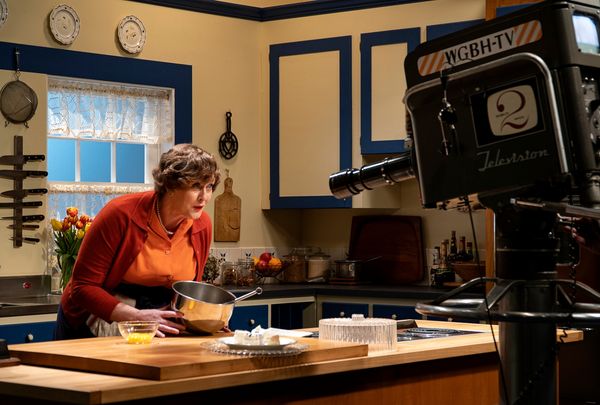 Sarah Lancashire on "Julia" (Seacia Pavao/HBO Max)From a 2022 perspective, Julia Child was a feminist through and through. "Julia" makes that argument by showing her constant resistance to snubbing by the men around her not only with charm but by showing them the higher worth of a necessary domestic activity typically derided as women's work. The entirely fictional Joyce expands that view to encompass the entirety of relationships between men and women, questioning the uneven division of labor around the house and in bed.
Sarah Lancashire on "Julia" (Seacia Pavao/HBO Max)From a 2022 perspective, Julia Child was a feminist through and through. "Julia" makes that argument by showing her constant resistance to snubbing by the men around her not only with charm but by showing them the higher worth of a necessary domestic activity typically derided as women's work. The entirely fictional Joyce expands that view to encompass the entirety of relationships between men and women, questioning the uneven division of labor around the house and in bed.
"Male desire is celebrated. Why should female desire be any different? "
"Julia" and "Minx" also take place during the second wave era of feminism, with Julia Child rising to national prominence in the early '60s, prior to the national push to ratify the Equal Rights Amendment. Joyce and Doug are operating in the thick of it, earning the ire of right-wing "family values"-focused councilwoman Bridget Westbury (Amy Landecker). But a fellow traditionalist on the feminist side of the court, Victoria Hartnett (Hope Davis), has no great love for Minx, much to Joyce's shock when she appears with her on an episode of "The Dick Cavett Show."
Child, meanwhile, was misinterpreted as a figure devoted to upholding the patriarchal status quo that relegates women to the kitchen; worse, she was accused of setting a high, unattainable bar for homemakers to meet. I won't spoil how that plays out in "Julia" since that episode has yet to air, but in an interview conducted in the late '70s she explains that this was never her goal.
"My point is to make cooking easy for people so that they can enjoy it and do it, rather than making it a kind of art for the 'we happy few,'" she said. This echoes what Joyce comes to embrace about the demographic her magazine serves: women who believe they have as much of a right to erotic satisfaction as men.
"Male desire is celebrated. There's an entire industry built on servicing it!" she tells a pair of sexist apes passing as radio shock jocks. "Why should female desire be any different? . . . Men like you are really good at limiting women's options. Now maybe, just maybe, you guys are worried is that my magazine can offer them something that you can't."
Managing the male egos that should've been supportive
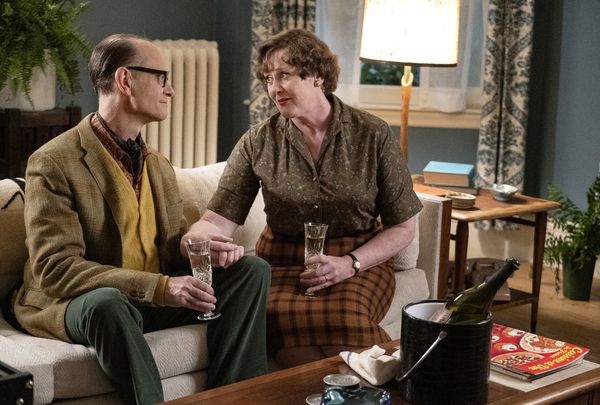 David Hyde Pierce and Sarah Lancashire in "Julia" (Seacia Pavao / HBO Max)
David Hyde Pierce and Sarah Lancashire in "Julia" (Seacia Pavao / HBO Max)
On "Minx" this doesn't refer to Doug but Joyce's ex-boyfriend Glenn (Michael Angarano), a fellow journalist who lands a job at a lad mag while Joyce struggles to get her periodical off the ground. Glenn's admission that he doesn't believe in Joyce's dream leads to them breaking up. Once Minx grabs national attention (and after Cosmopolitan successfully mainstreams the softcore male centerfold ) he changes his tune.
Turns like this are fairly typical in season-long arcs. However, "Julia" creates this obstacle from the very start by proposing that the first man to stand in her way was none other than her husband Paul (David Hyde Pierce), which goes against the popular story of their great love affair. By manipulating Paul into thinking her show is his idea with the help of her ally and editor Judith Jones (Fiona Glascott), Julia gets him on board without bruising his ego.
This is how Julia handles all the men who don't believe in her, much to the dismay of her best friend Avis (Bebe Neuwirth). "I just think about how many more hours in the day we'd have if you didn't have to spend so much of it apologizing to men for your success," Avis says, which Julia shrugs off.
"Men just need a little boost sometimes," she explains. "I find it terribly moving! It can't be easy having a woman steal your shine."
"What shine did you ever steal? That's your shine," Avis retorts.
Women supporting other women – and mothers as the secret weapon
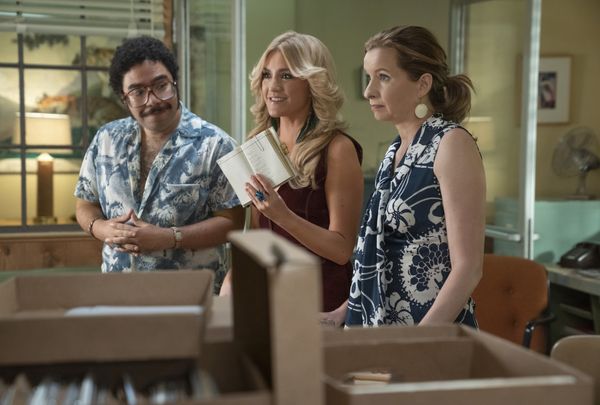 Oscar Montoya, Jessica Lowe, Lennon Parham on "Minx" (Katrina Marcinowski / HBO Max)Joyce may see herself at the face of women's equality, but her sister Shelly (Lennon Parham) and her centerfold coordinator Bambi (Jessica Lowe), one of Bottom Dollar's most popular nude models, make her a better feminist. Shelly calls her out on her assumptions about stay-at-home mothers and contributes editorial suggestions that make the first issue of Minx success.
Oscar Montoya, Jessica Lowe, Lennon Parham on "Minx" (Katrina Marcinowski / HBO Max)Joyce may see herself at the face of women's equality, but her sister Shelly (Lennon Parham) and her centerfold coordinator Bambi (Jessica Lowe), one of Bottom Dollar's most popular nude models, make her a better feminist. Shelly calls her out on her assumptions about stay-at-home mothers and contributes editorial suggestions that make the first issue of Minx success.
Bambi's comfort with her sexuality and participating in Doug's business forces Joyce to reconsider her long-held assumptions about sex workers.
Meanwhile, "Julia" affirms that the star could not have pulled off "The French Chef" without behind-the-scenes assistance from Avis and Julia's other friend Dorothy (Lindsey Broad), the mother of a young baby who Julia inspires to pull her own career ambitions out of mothballs. After all, mothers know how to pull off the impossible.
Want great food writing and recipes? Subscribe to Salon Food's newsletter, The Bite.
An attempt at intersectional allyship
This point comes with giant caveats, foremost being that "Julia" and "Minx" are fantasies whose white-centered visions of female empowerment shouldn't be sugar-coated. For one thing, neither of the Black women in its ensemble are real; Alice Naman is a composite based on several producers at WGBH. Despite taking place in the Civil Rights era – and in Boston, one of America's most segregated cities – we never see her experience overt racism, preferring to make Alice's struggles at WGBH akin to the sexism Julia confronts.
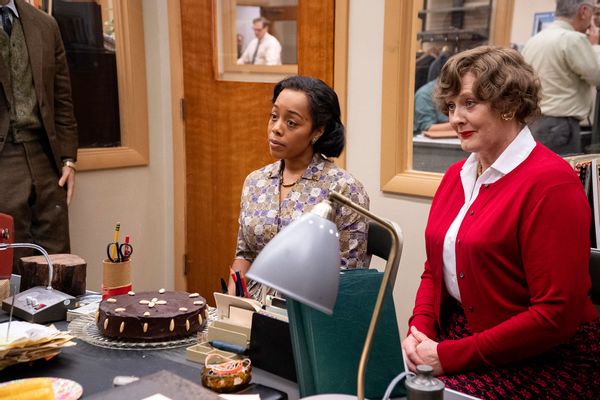 Queen of Sheba cake from "Julia" (Seacia Pavao / HBO Max)
Queen of Sheba cake from "Julia" (Seacia Pavao / HBO Max)
Having said all of that: just as Alice sees astronomical potential in Julia, Julia acknowledges that Alice is essential to her success. She advocates for Alice, encourages her to stand up for herself and backs her up when she does.
Meanwhile, in "Minx" Joyce wakes up to the fact that in the '70s, mainstream feminism is defined by and primarily meant to benefit white, straight women. Doug's – silent? secret? – business partner is Tina (Idara Victor), a Black woman he introduces as his secretary. Soon enough, though, anyone can see that she wields more power behind the scenes than Doug lets on. Doug is the face of Bottom Dollar while Tina is the brains. He knows the business won't work without her.
But it truly doesn't work without Bottom Dollar's photographer Richie (Oscar Montoya), an underappreciated groundbreaker whose work broadens Minx's market to appeal to both straight women and gay men. "All we get are these tortured physique poses – beefcakes on the boardwalk which, in the right mood, why not?" David Hockney (Laurence Fuller) tells him at a party. "But you're giving us actual male desire. That's really something."
Over on "Julia" the star discovers the coincidental service she provides to people on the margins when she meets San Francisco drag performer Coco Vin while enjoying a night on the town with James Beard (Christian Clemenson), who is gay. The show depicts Julia as conflicted in her feelings about queer people, particularly when she crosses paths with a fellow Smith graduate who names her as the reason she embraced her lesbian identity. Julia is no less wary of Coco when they first meet but, for obvious reasons, it doesn't take much for Julia to see herself in her biggest fan, perhaps nudging her closer to a more inclusive way of seeing the world.
This list could go on, delving into the way each show depicts what goes into producing magazine issues and TV episodes, or the myriad details in the set and costume designs that align with each show's philosophy of prioritizing unapologetic gratification, whether in the domestic sphere or beyond. Heck, when a woman who has just taken a cooking class with Julia asks Avis if shrimp is an aphrodisiac, you can almost envision Joyce endeavoring to answer that question.
Take visualizing "Minx" as a "Julia" lookalike, and vice versa, as a compliment, not a dig. "Minx" has run through its full first season, which may leave its fans bereft – not to mention nervous, since HBO Max has yet to pick up a second season. "Julia" is still cooking off a few episodes, although we're in no hurry for it to finish either. Knowing there's more of everything is always comforting, and if you've been shy about turning on one of these shows, release those inhibitions and turn it on. We'll bet you'll develop a taste for both.
All first season episodes of "Minx" and the first five episodes of "Julia" are streaming on HBO Max. New episodes of "Julia" debut Thursdays through May 5.
More stories like this:
- How prosthetic penises in shows like HBO's "Minx" reinforce existing stereotypes and taboos
- The joy of HBO Max's Julia Child series
- The irony of my feminist photo shoot
- From Riot Grrrl to CoverGirl


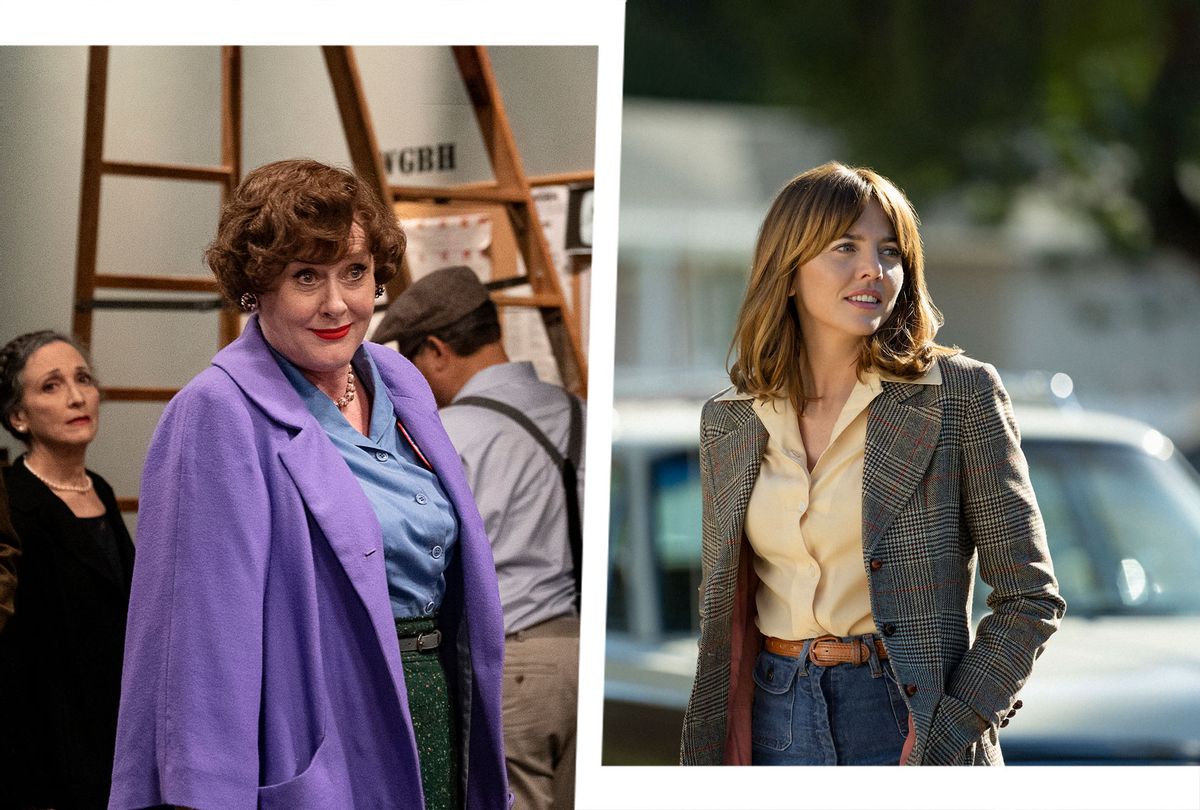
Shares